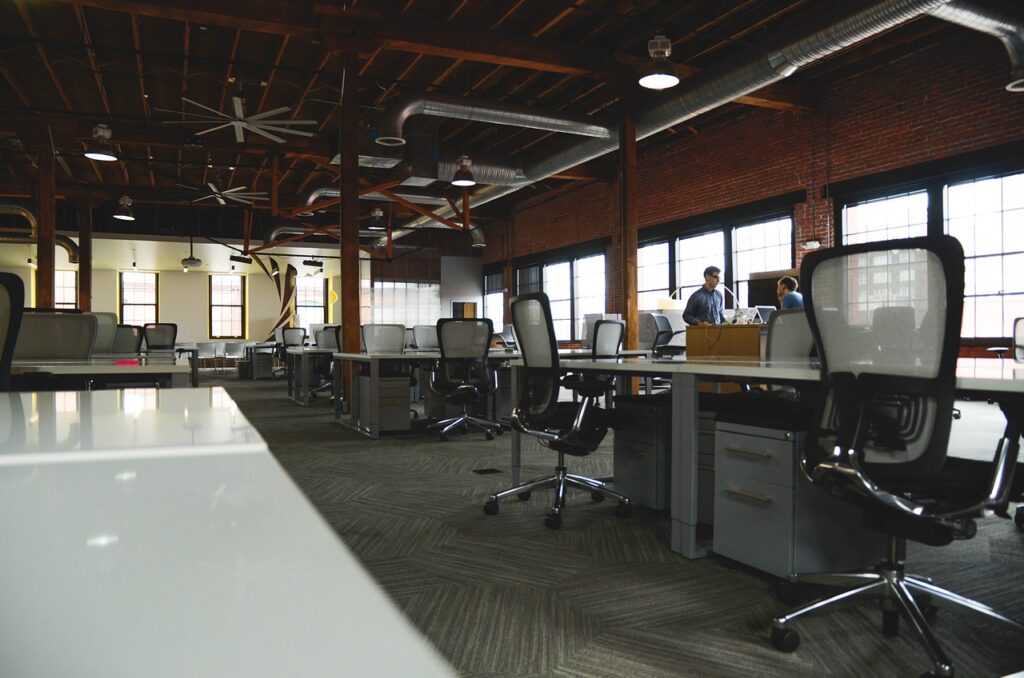The workplace has undergone a profound transformation in recent years, and one of the biggest shifts has been the rise of hybrid work models. A blend of remote work and in-office presence, the hybrid model is reshaping the way businesses think about office space. This shift has significant implications for commercial real estate, as companies rethink their space needs, layouts, and long-term leasing strategies. Let’s explore how hybrid work models are influencing the demand for commercial space and what this means for the future of the workplace.

The Rise of the Hybrid Model
The COVID-19 pandemic forced businesses to quickly adapt to remote work, and for many, the transition was smoother than expected. As employees embraced the flexibility and autonomy of working from home, companies began to see the potential benefits of offering a more adaptable work structure.
Enter the hybrid work model—a solution that allows employees to split their time between working from home and the office. For many businesses, this model strikes the perfect balance by offering flexibility while maintaining the collaborative benefits of in-person work.
How Hybrid Work Affects Commercial Space Demand
1. Reduction in Office Footprint
With employees no longer required to be in the office full-time, many companies are re-evaluating their need for large, traditional office spaces. Instead of sprawling, multi-floor offices, companies are opting for smaller, more flexible spaces that can accommodate rotating teams.
This shift is leading to a reduced demand for office square footage, but it’s not necessarily a bad thing. For commercial real estate investors, this trend presents opportunities to repurpose and reimagine office spaces to meet the evolving needs of businesses.
2. Flexible and Adaptable Spaces
As businesses adopt hybrid work models, there is growing demand for office spaces that can be easily adapted to different uses. Companies are looking for layouts that support both collaborative in-person work and quiet, focused tasks for remote workers who come into the office on occasion.
Coworking spaces, modular office designs, and flexible leases are becoming more popular as companies seek adaptable solutions. Commercial real estate developers are responding by designing offices with multipurpose rooms, movable walls, and shared amenities that cater to a fluid workforce.
3. Focus on Collaboration and Socialization
Since hybrid work allows employees to complete individual tasks remotely, companies are using their office spaces to foster collaboration, socialization, and team-building. Office design is evolving to reflect this shift, with an emphasis on open layouts, communal areas, and comfortable meeting spaces.
Instead of rows of cubicles, offices are being redesigned with large conference rooms, informal lounges, and breakout spaces to encourage interaction and creativity. This trend highlights the office’s new role as a space for connection, rather than just a place for daily work.
4. Decentralization of Office Locations
The traditional model of having one central office in a major city is being challenged by the hybrid work model. With employees working remotely part of the time, companies are exploring decentralized office solutions, such as satellite offices in suburban areas.
This decentralization allows employees to work closer to home when they need to be in the office, reducing commute times and improving work-life balance. As a result, commercial real estate demand is expanding beyond major urban centers into suburban and regional markets.
Opportunities for Commercial Real Estate
While hybrid work may reduce demand for large, centralized office spaces, it also creates new opportunities for commercial real estate investors and developers:
- Repurposing Office Buildings: Investors can repurpose or retrofit traditional office buildings into flexible, mixed-use spaces that cater to the needs of hybrid workers.
- Coworking and Shared Spaces: With companies seeking flexible leases and adaptable office solutions, the demand for coworking spaces is expected to grow. This presents opportunities for real estate owners to convert traditional offices into shared workspaces.
- Smaller Satellite Offices: Businesses are exploring the idea of smaller, decentralized offices in suburban or secondary markets. Investors can capitalize on this trend by developing commercial properties outside of major city centers.
- Emphasis on Amenities: To attract businesses, office buildings will need to offer more than just desk space. High-quality amenities such as wellness centers, outdoor areas, and high-speed internet will be key selling points for tenants.
Challenges to Consider
While the hybrid model offers flexibility, it also brings challenges for commercial real estate. Landlords may need to adjust their leasing structures to accommodate shorter, more flexible lease terms. Additionally, the demand for large office spaces in central business districts may decrease, potentially impacting vacancy rates.
However, by staying attuned to the changing needs of tenants and investing in adaptable, modern spaces, commercial real estate investors can position themselves for long-term success.
Conclusion: The Future of Commercial Space in a Hybrid World
The hybrid work model is here to stay, and its impact on commercial space needs is undeniable. As companies prioritize flexibility, collaboration, and decentralization, the demand for traditional office spaces is evolving. For commercial real estate investors, the key to thriving in this new landscape is to embrace change and look for creative ways to meet the needs of a hybrid workforce. Whether through repurposing existing properties, developing coworking spaces, or catering to suburban markets, the future of commercial real estate holds exciting potential for those who are ready to adapt.

